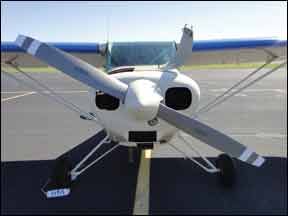Speed matters. Ask any pilot. Frustratingly, speed costs money and lots of speed, as the warbird set says, costs cubic money. In the single-engine piston world, we’d each love to blast across the sky over 230 knots in a Cessna TTX, yet for most, the exchequer doesn’t quite stretch to the nearly three-quarters of a million dollars needed to buy one.
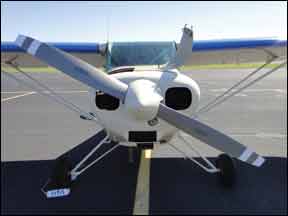
In this day and aviation market age, a $180,000 purchase price isn’t out of line, especially if it’s split a few ways. Moving through the air at 180 knots is cooking along nicely, so in keeping with our general fascination with symmetrical numbers, we decided to create the 180 for 180 club and then find out what airplanes are qualified to join—those that have a real-life cruise speed of at least 180 knots and a Bluebook value of $180,000 or less.
It turns out that a nice selection of airplanes qualify for the club. Naturally, our research lead to a number of caveats—few of the airplanes in the speed and price range were built in this century, and every single one of them is of sophisticated design with complex systems, so a careful pre-buy carried out by a maintenance technician who knows the type of aircraft is essential if you are going to avoid purchasing yourself a financial nightmare.
Always keep in mind that if these airplanes were being manufactured today they would cost three-quarters-of-a-million bucks, so you are not maintaining a $180,000 airplane—you are maintaining a three-quarters-of-a-million dollar airplane.
We found that after-market mods turbocharging and turbonormalizing, boosted cruise speeds past the magic 180-knot mark for many airplanes, but often added enough market value to the airplane to push it past our limiting number.
One mod is simply too new to evaluate—putting a Continental TSIO-550 into a normally aspirated Cessna 210 easily raises its cruise speed above 180 knots, but the mod has not been around long enough to generate data on the change to the market value of the airplane.
Finally, we found that the consistent rule of thumb to determine how many people, with modest baggage, you could carry with full fuel, most of the speedsters was to take the number of seats installed and subtract two.
Mooney
For decades Mooney had an unimpeachable rep for speed with modest horsepower—the airplanes went like crazy while sipping gas. Yet it wasn’t until the company decided that hanging big engines was okay that their airplanes crossed the 180-knot cruise threshold. The M20K 231 brought back turbocharging to the line after the company’s brief fling with it in the M22 Mustang—stay away, although that 1960s pressurized airplane can be bought for $57-$63,000 and cruises at 200 knots, maintenance issues and parts availability make it a nonstarter for an owner that doesn’t want a full-time project airplane.
The 231’s real-life cruise speed is about 170-175 knots, so it doesn’t make the cut here; however, in 1986 Mooney installed a slightly different, more efficient, intercooled engine of the same 210 HP, the TSIO-360-MB1, made a few more airframe tweaks and changed from a fixed wastegate to a density controlled, variable wastegate.
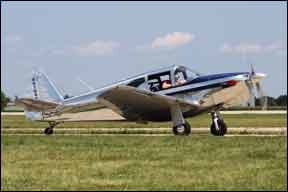
The payoff was a 10-knot cruise speed increase. Owners report 200 knots at FL210 while burning 11.5 GPH. With 75 gallons usable fuel aboard, range, with VFR reserves, can approach 1000 nm when cruising in the flight levels. Real life payload with full fuel is as low as 360 pounds and rarely more than 450 pounds.
The 1986-1990 252 series fell within our price range, Bluebook values run from a low of $125,000 to $165,000.
After the 252 went out of production, Mooney brought it back briefly as the Encore, bumping the horsepower to 220 and increasing the useful load by 200 pounds. Bluebook for the 1997 M20K Encore is $170,000, for the 1998, $180,000.
Two discontinued conversions by Rocket Engineering used the short-body Mooney airframe and turned a merely fast airplane into a screamer. The Mooney Missile is an M20J with a 300-HP IO-550-A up front. Cruise speed jumps to as high as 190 knots. The Mooney Rocket is an M20K with a 305 HP TSIO-520-NB engine and full-feathering prop. Cruise speed is as high as 220 knots in the high teens. While the Bluebook does not price these mods, we saw Rockets on the market recently with asking prices of $170,000.
One long-body Mooney met our parameters. The M20M TLS, with its turbocharged 270-HP engine cruises at 190-210 knots. Bluebook values range from $128,000 for a 1989 model through $168,000 for one built in 1995.
As with all Mooneys, watch for corrosion, particularly in the cabin frame tubes and for fuel leaks.
Beechcraft
Even with but 185 HP, the original Bonanza demonstrated that it was speedy. In 1966, when Beech created the 285-HP V35TC, it put a 200-knot single into the sky. While Beech never, in our opinion, quite got the turbocharging right on any of its Bonanzas, the V35TC served notice that the 285-HP short-body Bonanzas, 33 and 35 series, especially the lighter weight ones, would really boogie at altitude if turbocharged. The production run for the turbocharged V35s was but four years and Bluebook prices values from $69,000 for a 1966 model to $85,000 for one from the 1970 model year.
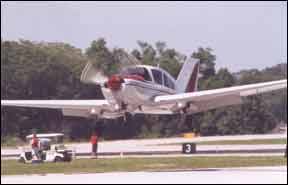
For the long-body Bonanza, the 36 series, the turbocharged A36TC and B36TC cruise faster than 180 knots at altitude, and many fall within our price parameter. While cooling and fuel burn has been a chronic issue with these airplanes, making us cautious to recommend them, the 1979 A36TC at a Bluebook value of $130,000 through the 1984 B36TC at $175,000 will give you the ability to carry four plus baggage with full tanks at over 180 knots by climbing to the upper teens.
Because the Bonanza line has been the beneficiary of what might be considered a mother lode of modifications, a buyer with a need for speed and a budget should, in our opinion, look for a Bonanza that has the Tornado Alley Turbo turbonormalizing mod. This conversion is available for all IO-520- and IO-550-powered Bonanzas and provides sea-level horsepower up to 20,000 feet.
The mod currently costs just over $50,000, depending on additional work performed but, according to brokers we’ve spoken with, unlike $50,000 worth of glass panel installation, holds its value we’ll on the used market. It is always cheaper to buy an airplane with the mods you want rather than paying to have them done, however, we heard numbers as high as $40,000 in market value bump for normally aspirated Bonanzas and Cirrus SR22s that had the turbonormalized mod.
A 1974 V35B Bonanza has a Bluebook value of $87,000. Turbonormalized, with a tip tank mod that boosts its gross weight from 3400 to 3600 pounds, it will carry 600 pounds in the cabin with 100 gallons of fuel aboard and fly 1000 nm at 200 knots with VFR reserves. Allowing the most optimistic market bump for the turbo mod and something for the tip tanks, the airplane still comes in under $180,000.
The long-body 36 line started in 1968 and is still in production. Bluebook value for a 1968 36 is $57,000. Turbonormalized, it will cruise at 185-190 knots. Assuming a $40,000 bump for turbonormalizing, and putting a $140,000 ceiling on Bluebook prices for the normally aspirated 36 series, everything up through the 1982 A36 at a value of $140,000 falls within our 180 for 180 envelope.
Cessna
Cessna pioneered general aviation turbocharging in 1962 with the model 320 Skyknight. In 1966, it hung a 285-HP TSIO-520-C on the 210, creating the T210F, an airplane that had no published maximum operating altitude and would cruise at over 180 knots in the flight levels. Refinements, including going to a cantilevered wing the next year made the airplane faster. A 310-HP pressurized version was added to the line in 1978, the T210 having been bumped to that horsepower the previous year.
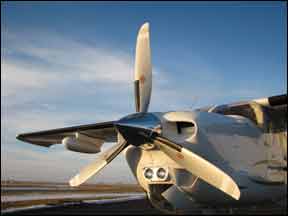
T210s are amazing load haulers, with the full 90 gallons on board, some could fill the six seats with 170-pounders and carry about 10 pounds of baggage. Realistically, the T210s will generally carry four or five adults and baggage with full fuel, the heavier P210s a little less. The 210 series has the longest CG range of any six-place single, so loading it out the aft end is not the issue frequently wrestled with Bonanzas and Piper Lance/Saratogas.
Solid instrument platforms, you can figure on crossing into the 180-knot cruise threshold at 18,000 feet and about 195 knots at FL250. Cessna 210 broker and guru Dan Howard, says he figures on 180 knots on 18 GPH at 18,000 feet in a T210 and adds one GPH for the P210 to keep up with the demands of the pressurization.
Howard recommends looking for an airplane that has had an intercooler added as it helps high and hot performance, engine longevity and adds about $3000 to the resale value.
The 32.5-gallon Flint tip tanks turn the T and P210 into a 1000-nm range airplane and, per owner comments, increase performance at altitude.
Although a $50,000 Bluebook value for a 1966 T210 looks attractive, making sure it’s in good shape before plunking down the purchase price is imperative. While the R model T and P210s have held their value so we’ll that all were above our $180,000 max number, all of the other model T210s fell within the box, with the 1984 T210N coming in at $172,000.
The P210 is the only pressurized single that made our 180 for 180 cut—with a 1978 model valued at $137,000 and a 1982 at $177,000.
Cirrus
The market reacted to the 2001 introduction of the 310-HP, ballistic parachute-equipped Cirrus SR22 by buying them in quantity. Cruise speed pushed 180 knots rich of peak, but it wasn’t quite fast enough to meet our 180-knot minimum.
Since then Tornado Alley Turbo developed a turbo-normalizing kit for the SR22 that proved so effective the factory eventually installed it, with the turbo-normalized airplanes outselling the normally aspirated versions about two-to-one, which matched Cessna’s experience with the T210 and 210.
Cirrus eventually developed its own turbocharging system, with the SR22T. Both versions of the blown-engine SR22 easily cruise faster than 180 knots, some making 210 knots at FL230.
With 84 gallons aboard and a useful load of 1100 pounds, the SR22 carries a decent load—600 pounds in the cabin with full fuel isn’t bad in a four-place airplane.
The problem we ran into was pricing. For 2010 and more recent airplanes, the Bluebook recommends adding $85,000 to the value for turbocharging. It does not give an add on for prior years. At some $45,000 installed for the turbonormalizing mod, we can’t believe the resale value exceeds the cost of the conversion. Our conversations with brokers gave us resale values as high as $40,000 for turbonormalizing, although we think that is still too high for older SR22s.
Nevertheless, even allowing the full cost for the turbonormalizing mod, a potential owner could buy a 2001 or 2002 SR22, have the modification performed and still walk away with $5000 to $15,000 change from $180,000. There are some 950 turbonormalized SR22s in the field and while we didn’t see any listed for sale, we have to believe that some can be purchased below our $180,000 number.
The caveat is that those older airplanes are due for the ballistic parachute repack, a $10,000 bit of maintenance, watch the sale price accordingly.
Piper
Piper’s speedsters, the Malibu and Mirage, easily blow past our 180-knot admission ante, however, we couldn’t find any for $180,000. At the other side of the stadium, most of the Lance/Saratoga series, even the turbocharged versions, can be purchased for $180,000 or less, however, none of them have a real world cruise speed of 180 knots.
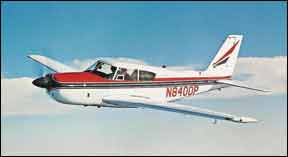
There is one Piper that is a member of the 180 for 180 club—the muscular PA-24-400 Comanche 400. Built in 1964 and 1965 because William Piper’s son, Pug, was convinced that turbocharging would never be viable for general aviation and the only way to get a lot of power at altitude was to start with a huge amount at sea level, Piper dropped a 400 HP Lycoming IO-720-A1A into a Comanche. Initially, the airplane had headaches galore, but determination and a dedicated owners group worked them out over the years.
If you want to whistle along at 185-195 knots while burning 20-22 GPH ROP, have some tolerance for taking care of a slightly offbeat airplane and desire attention when you taxi up to the ramp, Bluebook value ranges from $112,000 to $116,000 but notes that the “value of upgraded or restored models may be significantly higher.”
Bellanca
You want quirky and cool? Look at a turbocharged Bellanca Super Viking. Known as exceptionally tough, with a funky turbonormalizing system on a 300-HP Lycoming IO-540-K1ES, this sports car-handling machine will do 190 knots at FL200. With a tube and fabric structure, cramped interior and a 1000-pound useful load, it tends to be an airplane for aficionados and true believers in the marque.
Now orphaned, as its parent company changed hands and went broke a few times, a potential buyer has to go into a deal with eyes wide open for the airplanes are reputed to be a challenge to keep in good working order, engine cooling is not what it should be and the fabric covering means the airplane must be hangared.
Bluebook values range from $49,000 for a 1972 model to $66,000 for one from 1978. While superficially attractive, we can’t help but recall a friend’s comment when we looked at buying a late 1960s Alpha Romeo, “You’re getting all of the maintenance costs and headaches of a Ferrari without the initial price of admission.”
Conclusion
Once we got into the research, we were pleased to find that the 180 for 180 club was not nearly as exclusive as we’d imagined. Split three ways, for example, it’s a way to buy great speed for a reasonable price and have money left over to refurbish the interior and update some avionics.
If it were we, for a four-place airplane—recognizing that it’s a two-placer in real life—we’d first look for a turbonormalized, early model Cirrus SR22, or even consider buying one that had not been converted and having the mod done. A very close second would be a turbonormalized 35-series Bonanza with tip tanks, as it would be like being fitted with seven-league boots—we could easily make 1000 nm trips at 200 knots or better.
For a six-place airplane, we like the Cessna T or P210 series with aftermarket intercooling. While a turbonormalized Bonanza has a little better handling, the long CG and payload of the Cessna tips the scales. If our maintenance budget would allow it, the P210 would be at the top of the list as pressurization keeps the family much happier than nose bags and it has one of the quietest interiors of any single.
We’d stay away from the Comanche 400 or Bellanca Super Viking unless we held an A & P rating or truly liked to tinker and had a friendly mechanic to watch over us.

